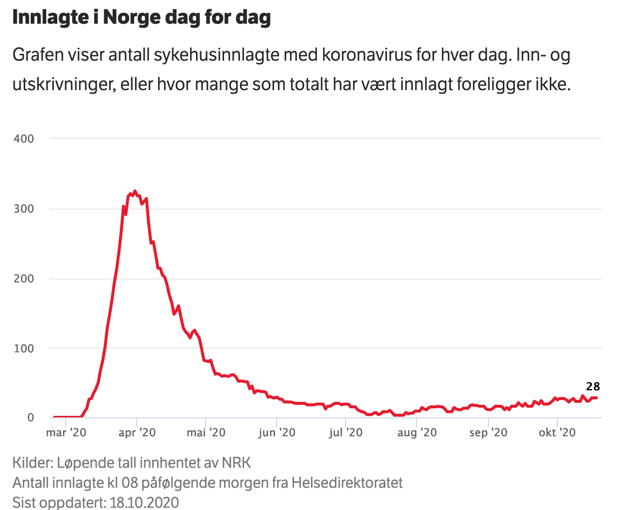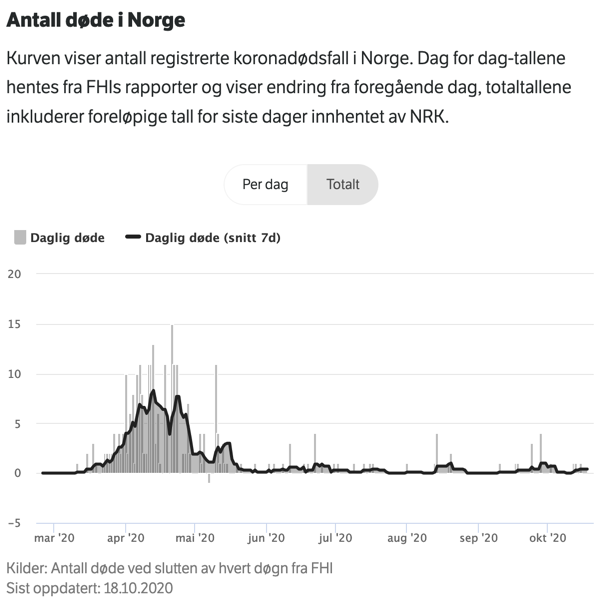Chinese GDP, European double dip and Norway as the model
The thread that ties today’s topics at Credit Writedowns together is the novel coronavirus pandemic. That’s because how various countries have fared economically is very much dependent on what they are doing to control the virus.
Let me give you an example. In the UK, Wales is to go into a national two-week ‘firebreak’ lockdown to stop the coronavirus.
Everyone in Wales will be required to stay at home and work from home wherever possible. Workers in critical jobs and those for whom working from home is not possible are allowed out.
Non-essential shops, tourism and hospitality businesses will have to close, except for takeaways, along with community centres, libraries and places of worship – other than for funerals and weddings.
The government rightly described the utility of the lockdown, saying it “buys us [time to] be used to build up a resilient test, trace and isolate system in Wales”. But I told you six to seven months ago that this was the purpose of the first lockdown. If Wales hasn’t put that system into place now, they have misused the last six months, to the detriment of their economy. And understandably then, there is a lot of resistance to this, particularly because of the economic impact.
Framing
So with that example, let me frame the issue before we get into some of the data and news flow.
We do know a considerable amount more about the virus now than we did during the initial lockdown. For example, a recent study shows that day-care centers are very low risk for Covid-19 transmission, one reason that the Danish approach of re-opening with childcare facilities first worked. And although many in the West are pushing the concept that mask-wearing is not an effective mitigation strategy against coronavirus, we do know that mask mandates can halve Covid-19 infections.
Even so, the post I wrote back in April on how we can achieve minimal economic disruption from Covid-19 still reads incredibly well six months later, both in terms of the need for testing, quarantining and contact-tracing and the likelihood of second waves due to inadequate policy responses.
In Asia, where mask wearing was already socially acceptable before the pandemic, and where lockdowns, testing, quarantines, and contact tracing have been exemplary, the coronavirus has been held at bay. As I put it in April, “In the most short-sighted countries (like the US), loss aversion will drive out all other considerations. And the likelihood of lifting lockdowns before measures are in place to control a second wave is high. This means greater loss of life and greater economic disruption, in my view. And so, I tend to look at worst case economic outcomes for the US as closer to baseline than best case ones.”
Europe, after looking more like Asia in the Spring, started to look a lot more like the US in the summer in terms of social distancing and coronavirus mitigation behavior. Even in Germany, the numbers are increasing rapidly. As they are in places like the Czech Republic, once lauded for its response during the first wave. All the testing in the world won’t stop the spread of the virus unless you enforce government-mandated lockdowns as they have done in New Zealand. And while Wales is doing just that now, they are doing so only after a lag, reacting to a rise in case counts. And that means the duration and economic impact of the lockdown will be more severe or the policy will be abandoned prematurely.
The economic impact of policy responses
This has people thinking Europe could go into a double dip recession. Here’s how the FT describes the situation:
Europe’s economy is sliding towards a double-dip recession, with economists warning that rising coronavirus infections and fresh government restrictions on people’s movement are likely to cut short the region’s recent recovery.
Germany, France, the UK, Italy, Spain and the Netherlands have all announced measures in the past week to contain the rise in Covid-19 infections, with more expected in the coming days.
Belgium on Sunday announced the closure of all bars and cafés for four weeks, while Switzerland widened its mandate for wearing masks. France put into effect a 9pm-6am curfew in Paris and other cities from Saturday.
The measures follow a sharp rise in case numbers, with a number of European countries reporting record new daily infection figures over the weekend.
“I can’t believe how fast the second wave has hit,” said Katharina Utermöhl, senior economist at Allianz. “We now see growth turning negative in several countries in the fourth quarter — another recession is absolutely possible.”
While third-quarter figures are expected to show record growth in eurozone gross domestic product when they are published at the end of this month, a rising number of economists are already cutting their fourth-quarter forecasts into negative territory.
Again, this is the result of inadequate social distancing measures in the summer causing a creeping rise in case counts, followed by the exponential spread of the disease causing a drastic policy response to shut down economic activity and prevent deaths. Without a restrictive policy response, the WHO says the loss of live could be five times higher by January than it was in the first wave in Europe.
We have to expect the same outcome in the US as coronavirus cases rise. There, red-state governors are resisting measures to slow the spread and instead preaching ‘personal responsibility’. The result is catastrophic in terms of public health outcomes.

Source: Washington Post
And this is guaranteed to hurt the economy either via restrictions that come too late or due to changed consumer behavior. The same mushrooming of death counts that the World Health Organization predicts in Europe without restrictions has to be the expectation in the US. And so, the potential for a double dip in the US is clear, though I have yet to make this my base case.
Chinese GDP numbers
The Chinese are showing us what happens when you take the pandemic seriously (and throw in some debt-fuelled stimulus for good measure).
At the macro level, China’s gross domestic product rose 4.9% in the third quarter compared to the same quarter in 2019. That’s faster than the second quarter’s 3.2% expansion over the year-ago period, but it’s below the 5.5% forecasted rise.
As Bloomberg put it:
The economy expanded 0.7% in the year to date, meaning that the world’s second-largest economy regained all the ground it lost in the first half.
What’s clear is that the economic upturn in China is broadening. It has gone from something that was stimulus-led and infrastructure spending and industrial production-fuelled to something that has broad-based consumer participation.
The affluent and people living in export-oriented coastal provinces were the first to start spending money again. But activity is resuming now even in places like Wuhan, the central Chinese city where the new coronavirus first emerged.
“You’ve had to line up to get into many restaurants in Wuhan, and for Wuhan restaurants that are popular on the internet, the wait is two or three hours,” said Lei Yanqiu, a Wuhan resident in her early 30s.
And so, while there’s no guarantee that the virus won’t come raging back in China, the measures the Chinese have put in place have worked so far. And I expect them to continue to work given the level of state control there is in mandating social distancing, quarantining and instituting lockdowns.
Norway as the model
Let me step back from the controversial ‘Sweden as the model’ stuff. I think it has outlived its usefulness. The reason I have been pushing it is this. If we in the west had a tradition of mask-wearing, the protocols in Japan or Singapore or Thailand would be the ones to emulate. But, I think there is too much resistance to that in the West for it to be as effective (even though I wear a mask and socially distance assiduously).
So the right question from a cultural perspective is which country could we emulate to achieve the right balance of freedom, economic activity and public health. I think the Swedes have the right macro framing with their concentration on the long-term sustainability of public health protocols. But, of course, Sweden’s initial no-lockdown approach failed, especially in eldercare facilities, whereas other Nordics – the Danes, Norwegians and Finns – did well. The Swedish approach was an unmitigated disaster at first. And they spent the better part of the Spring getting out from under that.
However, now, the Swedes, with their enhanced mandated social distancing rules and ad hoc travel restrictions, are doing it better than most. And that’s one reason their infection and death rates have yet to spike again. I realize that is not the prevailing view. But all approaches will be battle-tested in the coming coronavirus wave which looks set to be very deadly. So we will find out.
The most utopian approach is New Zealand, where no social distancing measures are even necessary because they have a zero tolerance approach to case counts and can enforce that through traveller quarantines because they are an island nation. If I could praise one country it would be New Zealand. However, that won’t work for the likes of Germany, where the Schengen accord makes this unrealistic.
So, let’s use Norway as the model instead. They are much less controversial than Sweden because they actually had foresight and had a lockdown. And the Norwegians have maintained low hospitalization and death rates throughout the crisis. Moreover, unlike Denmark, I see no rise in hospitalization or deaths in Norway yet, even as people move indoors.
Here are a few charts from the Norwegian public broadcaster NRK. They show daily coronavirus cases, existing hospitalizations, and deaths.



And for those of you who don’t read Norwegian, what you can see from the numbers is that case counts have risen, with July as the nadir. That’s in part because of testing. But we do have to be concerned that some of it is because the R-factor has risen as people have became less socially-distant in the summer.
But for me, the lack of an equivalent rise in hospitalizations and the almost complete lack of deaths is testament to Norway’s success in keeping a balance between unrestrictive daily life, economic activity and public health. The fact that hospitalizations and deaths are not rising as quickly tells me that the Norwegians are catching cases of the virus early and preventing individual worst-case outcomes much more often.
My view
I am taking in a tremendous amount of news flow from various language sources now because I feel like the Fall/Winter pandemic outbreak is a significant event which requires a more international filter. And the sense I get is that we are on the cusp of a major, major rise in cases, hospitalizations and deaths worldwide.
The countries most resistant to social distancing, testing, and quarantining will be forced into localized or even national lockdowns or risk horrific death tolls. The United States will be one of those countries. And therefore, there is considerable downside risk to economic growth forecasts in the US – which is negative for risk assets but bullish for safe assets like US treasuries.
It’s not clear to me how countries with good macro coronavirus public health regimes like Germany will fare. A lot of this depends on the level of policy fatigue in the populace. And so, I tend to think worries about a European double dip make sense.
Asia will do the best here. And perhaps this fact that eastern Asian countries will outperform will cause an economic deepening in Asia that increasingly means less trade with Europe and North America. At a minimum, if you are looking for places in the emerging markets to hide from the coronavirus – both in investment and physical terms – Asia is the place to look.
Comments are closed.